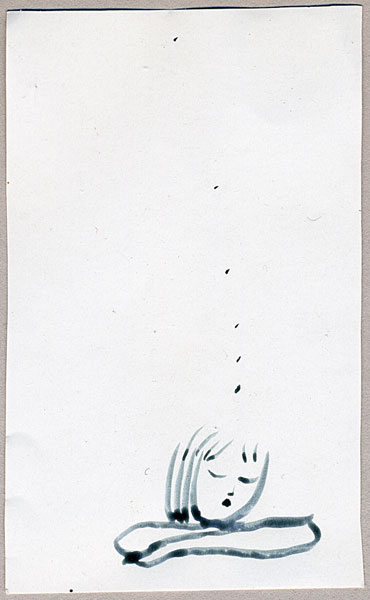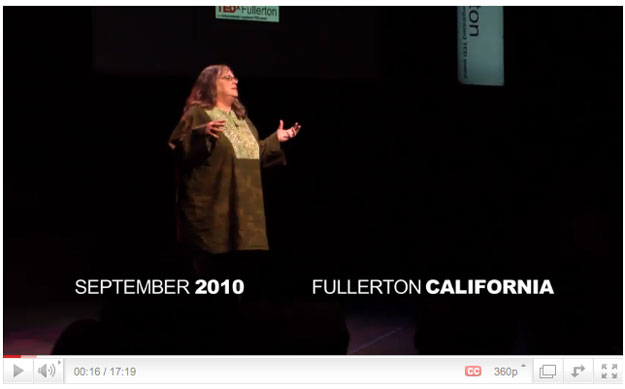Meander Time
The other day in the studio I was reminded of how important it is for me to have what I like to call “meander time”.
Meander time is that unstructured, unproductive, unhurried envelope in which there are no goals, no urgency towards completion, only a free and easy flow of listening to and following our quiet inclinations.
When I work in my studio, I generally jump in where I left off the day before. I settle easily into a humming rhythm of focus and productivity. But this time, something didn’t feel right. The process felt forced.
I paused and found a comfy place, got quiet, closed my eyes and went inward. It became clear to me that I hadn’t been allowing time recently in the studio for exploration, for browsing in books, for lying and looking at the ceiling, for staring out the window or just being.
 |
This is pure right brain territory.
This is when we are in a receptive state.
This when fresh, new ideas are able to flow in.
Most of us were told when young and apt to daydream that we were “wasting” time. Wasting time is frowned upon severely in a society full of people who feel so busy and strapped for time. We feel more virtuous when we are productive.
Some of my most rich and fruitful ideas come from meander time. Sometimes this means getting outside the studio – going on a walk or just sitting and being in nature. Sometimes it involves going on the studio with no particular plan and allowing myself to rest, nap, stare at the works in progress, peruse art books or leaf through boxes of old drawings or supplies. It’s really about letting go of a particular objective and following what feels right in the moment.
There’s a delicate balance we artists ride between doing and being.
Too much “being” can be a disguised form of avoidance. Too much “doing” and our creative well dries up because it is never replenished.
What about you? Have you noticed this rhythm within yourself? When have you opened up to meandering and allowed new ideas to flow in?
Leave a Comment
The hybrid artist
I just found out about Karen Atkinson an artist who has taught the business of being an artist at CalArts in Southern California for over 22 years. She also founded a company called GYST that creates business software for artists and offers other business related services for artists.
What I really appreciate about this talk is how she emphasizes that there are multiple ways to approach a career as an artist. She outlines two different models of an artist’s career – the vertical artist climbing a hierarchical ladder and the horizontal career or creating a hybrid of the two.
It’s important to remember though our contributions may not shimmer glamorously, our role is vital to our communities. Atkinson put it this way:
If you are an artist that is not interested in that vertical career and you’re not the next hot thing, then you’re sort of, like, not as important. If you don’t make a lot of money you’re not considered a very important artist.
But, I think those artists who have been pludging [sic] along, doing very interesting things either in their communities, their businesses or their daily life have much more effect on the general culture than those who work only in a vertical trajectory.
 |
http://www.youtube.com/watch?v=IehUM7XxJNU
What ways can you see that your work as an artist either in the studio or in the greater world have contributed to those around you, even in small ways?
Leave a Comment
How to keep going over a long haul…
 |
|
Laura Paulini, Black Beauty |
Sometimes artworks are executed quickly. We get to experience the sweet satisfaction of completion in short order. But what about those projects that that develop over months or even years? (I’m working on one myself right now.)
How do we keep going when the project takes longer than expected?
How do we keep working when the end is not clearly in sight?
Can we enjoy the process for its own sake?
I was particularly inspired by artist Laura Paulini’s shining example of perseverance recently and am eager to share it with you.
Laura builds her acrylic and egg tempera paintings by applying the paint in rows and patterns of dots, each dot of paint painstakingly applied with the end of a chopstick.
 |
Each 40 x 40″ panel takes months to complete, row by row, dot by dot.
Nine months ago, she decided to undertake a slightly larger piece. For this 60″ x 60″ panel she also chose to create a base layer of stripes over which she will add the dots.
It took her seven months, working about four days a week to paint all the stripes for the first layer. That’s approximately 8,150 stripes each month for a total of 57,000!
I asked Laura how she kept going during a process that takes such meticulous care, attention and time.
 |
When I started in July, I had hoped to be done by Thanksgiving. When that didn’t happen, I thought maybe by Christmas. After that, I stopped thinking too much about an expected end date and surrendered even more deeply to the process knowing I would, indeed, some day actually finish and that I just needed to keep going.
What were some of the hardest periods?
One hard period was around the holidays when time in the studio was getting compromised by outside responsibilities and distractions. I felt great concern about getting too far away from the piece and loosing momentum. Luckily, I was able to get to the studio often enough and keep the piece going.
What were some of the phases of your process that you went through during this time?
The period from October until January (the dreaded “middle”) was difficult because the density of the stripes hadn’t yet achieved that “critical mass” when the colors dance off one another and create a blend that moves the viewers eye across the piece. I felt like I could work for eight hours and then stand back and not really see any change. Once the density of the stripes was closer to final (near the end of January), each day in the studio felt very satisfying and I could make rather large “shifts” in the rhythm of the piece, getting it to work the way I had hoped. The last few weeks were really a pleasure and I found I had ambivalent feelings about finishing.
 |
How did you carry on when you didn’t feel like working on it?
I simply tried to honor my commitment to my studio practice and show up. Once there, I quickly changed in to my work clothes, started mixing my colors, and got to work. I tried to let negative thoughts and doubts dissipate as quickly as possible and respond to them with humor. In the evenings, I would try and look at books or films that inspire and guide me. My husband and my friends have also been incredibly supportive and their enthusiasm and excitement about the piece is also very encouraging to me.
Were you tempted to take a break and work on other things?
Not really. I feel privileged to have been able to focus solely on this piece and to give myself the space and time to do it. I really never saw myself as being able to give much to another piece while this one is in process – and didn’t really want to. I’m just now being able to actually think about what might come next.
Were you tempted to give up?
Sure. It’s very easy to think of all the reasons why, too! So far I haven’t given up on this piece – or on my desire to make a contribution to the discipline of painting. I hope I can say that a year from now, two years from now, five years from now. We’ll see…
Leave a Comment
